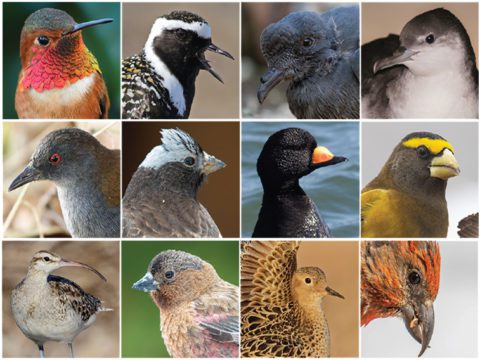Chick-A-Dee-Dee-Dee Alarm Calls Are a Lingua Franca of the Bird World
December 22, 2022
From the Winter 2023 issue of Living Bird magazine. Subscribe now.
The urgent namesake call of the Black-capped Chickadee (chick-a-dee-dee-dee) is understood across the bird world, according to research published in September in The American Naturalist. For the study, scientists broadcast chickadee alarm calls in forests in Central and South America where there aren’t any chickadees, and the tropical birds reacted just like a Tufted Titmouse would in an American backyard—coming closer to investigate and help out if needed.
“Being able to take in clues from the environment is basic to survival,” says study lead author Luis Sandoval from the University of Costa Rica, in explaining why birds in his country reacted so familiarly to chickadee vocalizations they’d never heard before. In other words, if a species doesn’t recognize that certain calls mean danger the first time they hear them, they might not live another day to learn the signal.
The chick-a-dee-dee-dee call is a classic bird alarm call, used to summon fellow chickadees as well as nuthatches and other songbirds for mobbing a predator. Sometimes it means something else, like communicating the discovery of a new food source, such as a newly filled bird feeder. A common thread is that the call often acts as a “come here” message for other birds in the area.
Sandoval and coauthor David Wilson from Memorial University in Canada used playback of Black-capped Chickadee audio recordings (including some from the Cornell Lab of Ornithology’s Macaulay Library) to see if chick-a-dee-dee-dee translated for bird communities in Costa Rica, Colombia, and Brazil.
Their results showed that 38 Neotropical species—birds like Bananaquit and Rufous-tailed Hummingbird— responded strongly to chick-a-dee-dee-dee calls, coming within 5 meters of the playback speaker. The study authors say these results indicate that alarm-call responses are innate rather than learned. In other words, many birds were hardwired to respond to this unfamiliar call.
“Distress signals … are often ingrained and share some acoustic characteristics that help other animals recognize danger,” says Sandoval.

All About Birds
is a free resource
Available for everyone,
funded by donors like you
American Kestrel by Blair Dudeck / Macaulay Library







